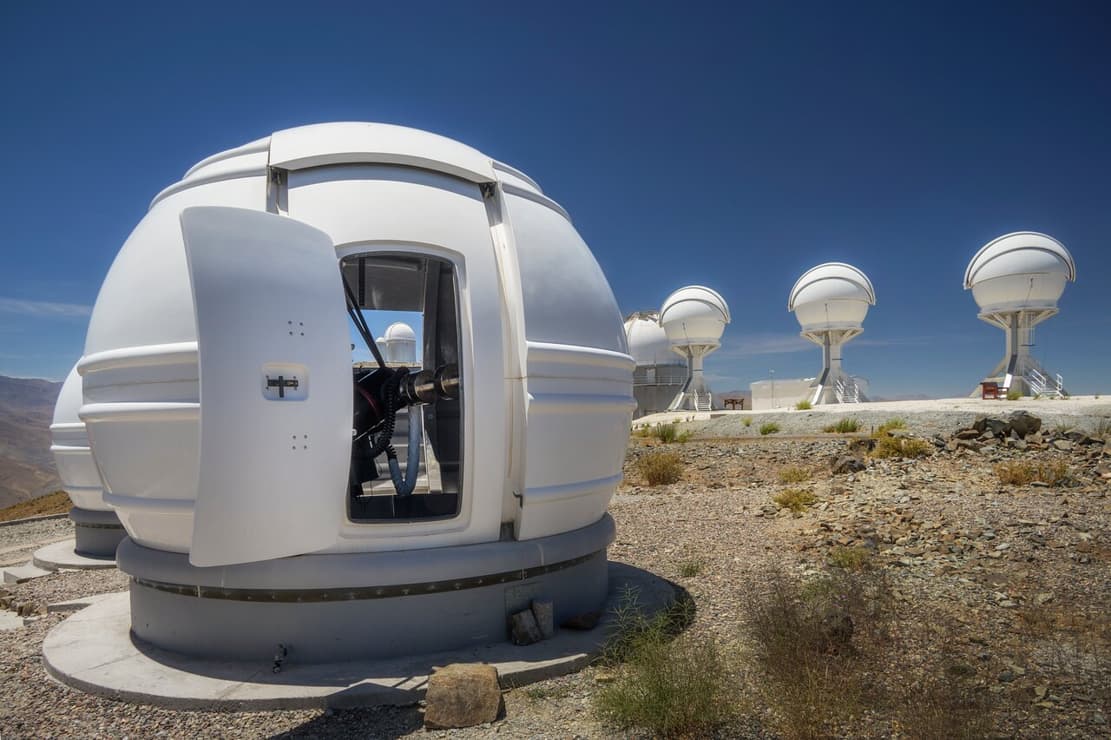An ExTrA special planet hunter. The white pearl on the left side of this picture is one of the Exoplanets in Transits and their Atmosphere telescopes — ExTrA for short.
Located at ESO’s La Silla Observatory at an altitude of 2375m, ExTrA is a French national project comprising three 60-centimeter telescopes that are working towards one goal: to detect Earth-sized planets (exoplanets) in our home galaxy, the Milky Way.
ExTrA focuses on planets around very small stars, with a radius down to a tenth of the Sun. It relies on the so-called transit method, looking for slight dips in the light emitted from a star when a planet passes in front of it, like a tiny eclipse. The smaller the star is, the larger the dip an Earth-sized planet will cause. Each telescope observes a target star and four reference ones to calibrate the effects of Earth’s atmosphere. The telescopes can observe either the same patch of the sky or different ones; the light they collect is sent to a single infrared spectrograph that breaks it up into different colors or wavelengths, thus combining the classic transit method with spectral information.
Not only do ExTra telescopes make great exoplanet hunters, they also make pretty good picture frames. Just kidding, but can you see the telescope peaking through the frame of the door of the dome? It’s the ESO 3.6-metre telescope. Also, ExTrA is not the only triplets at La Silla: in this image, we can also see the three BlackGEM telescopes.
Credit: ESO/A. Ghizzi Panizza


